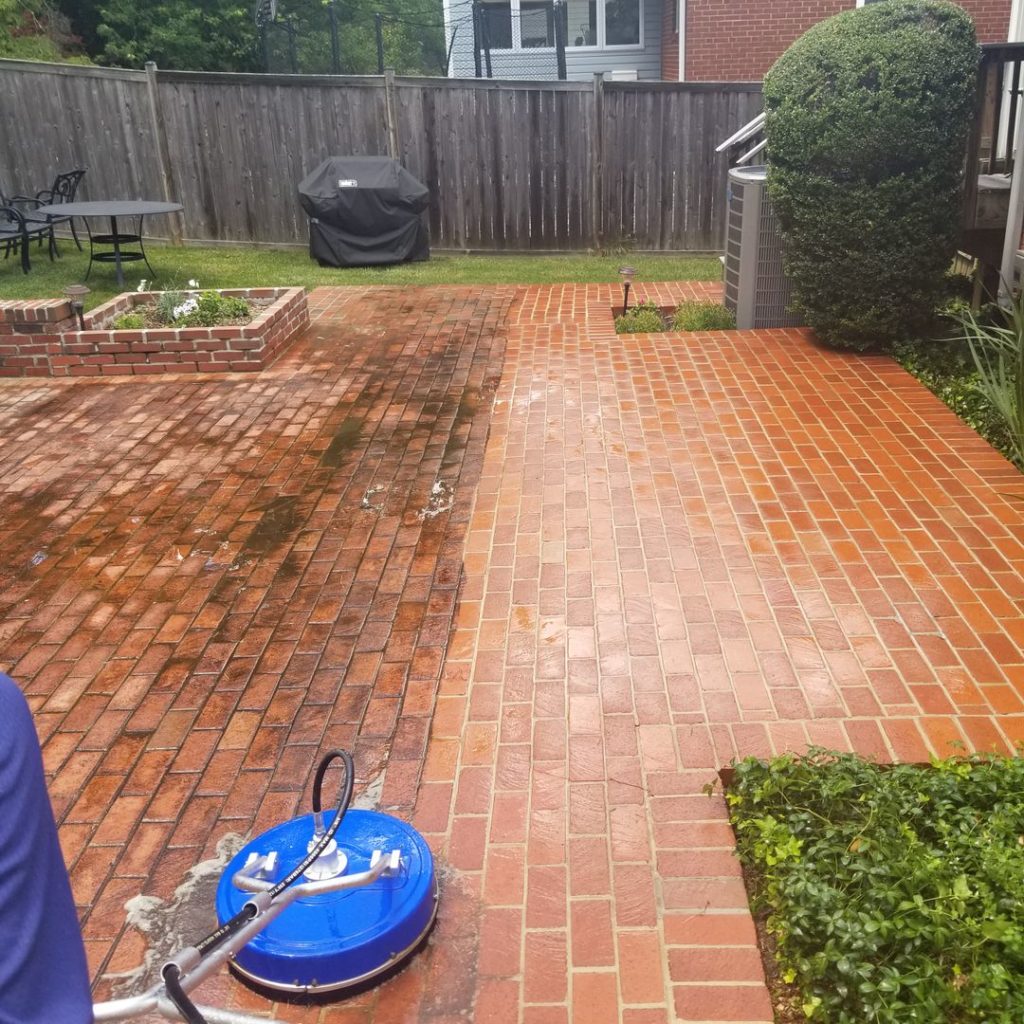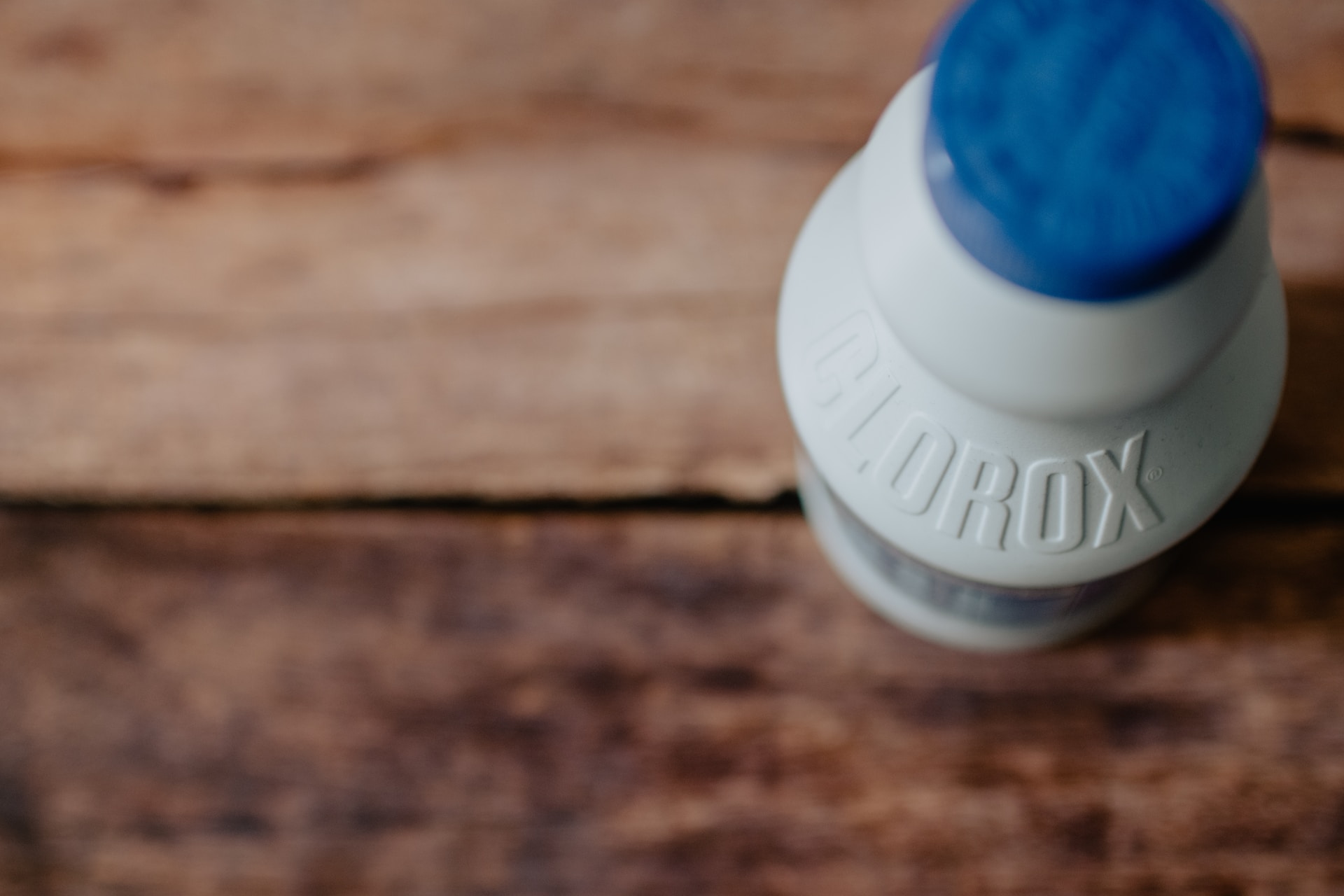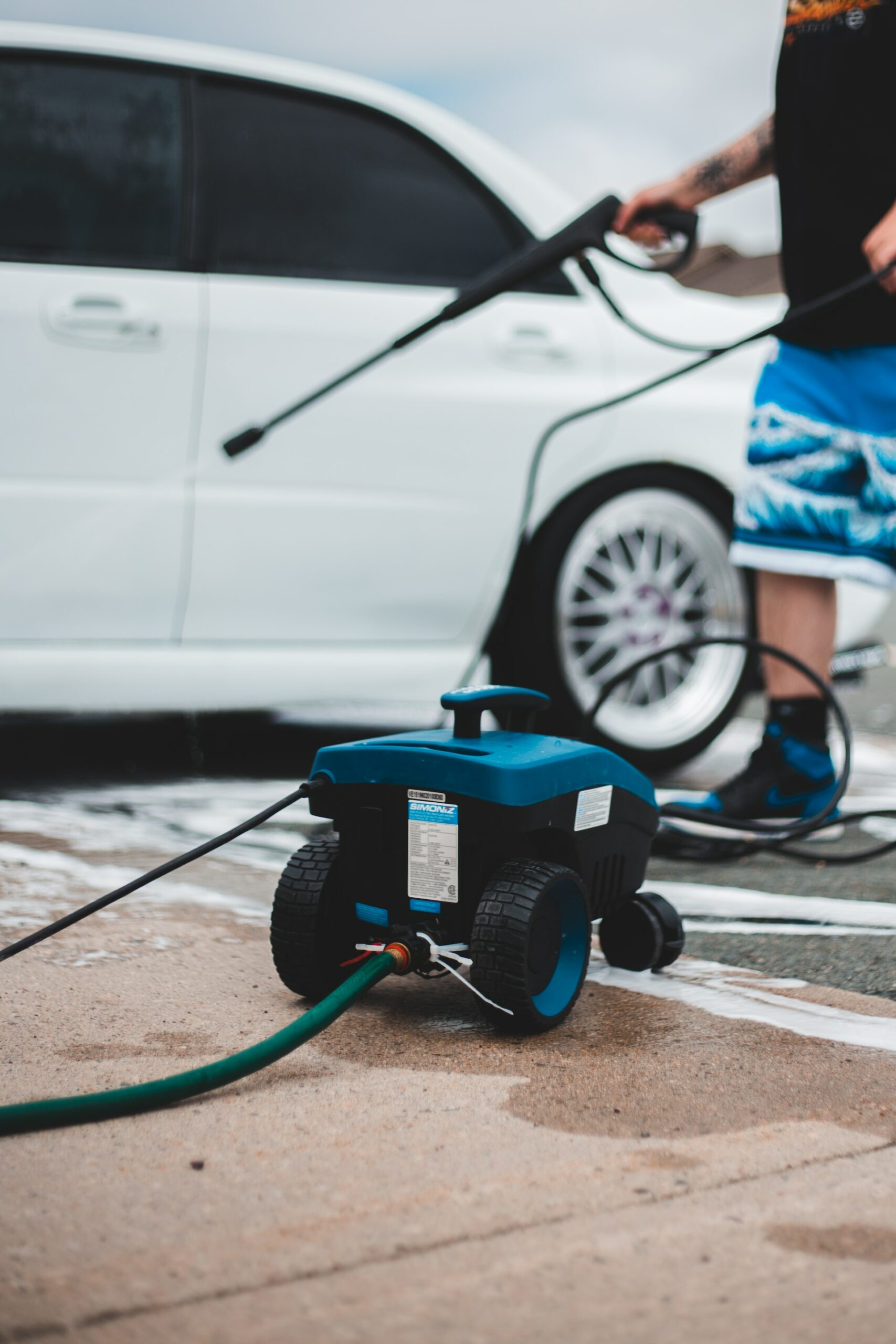With all the satisfying pressure washing videos on the Internet, it looks pretty easy to head outside and start spraying down everything that looks a little grimy, right? Believe it or not, there are many important factors to consider: safety precautions, knowing what chemicals and equipment to use among others. As a professional pressure washer, I’d like to share some quick tips to make your own cleaning projects a breeze.
Always Wear Protection
Just because you’re using water doesn’t mean you shouldn’t be careful. Water is a powerful force; with enough pressure and precision, a jet of water can easily cut through steel.
While a pressure washer isn’t nearly as powerful as the waterjet cutter above, it can still seriously damage soft tissue. Coupled with industrial-strength cleaning chemicals and that water is twice as dangerous.
Here are a few real-world examples (read: painful rookie mistakes) to consider before you break out a pressure washer for the first time:
While all my toes are accounted for, I wasn’t paying attention during one job and my unprotected hand slipped in front of the water jet nozzle while it was on. Even though I consider myself lucky, the jet still tore off about a square inch of skin.
These wounds are dangerous since the high pressure can cause injection injuries when pointed directly at soft tissue or scraping injuries (such as the one I got) if the jet’s at a very shallow angle. Aside from the water, the penetrating force can introduce bacteria deep into the tissue causing nasty infections and even nerve damage.
Another example was my worst injury: I accidentally sloshed a bit of industrial (15% concentration) bleach onto my eyes when trying to take it out of my vehicle. Even after immediately flushing my eyes for ten minutes and rushing to urgent care, my right eye was still fuzzy for a week afterward. Both eyes are fine now but it was a scary experience.
And while these examples might frighten you or put you off pressure washing, don’t be scared. These injuries can be prevented simply by protecting yourself. Keep your skin (especially hands, feet, and face) and eyes covered, be careful when dealing with chemicals, and don’t point the wand at anything living.
When and How to Use Cleaners with Your Pressure Washer
Sometimes water pressure alone isn’t the sole solution to your cleaning projects. By using chemical cleaning solutions, you can wash more delicate surfaces with lower pressure as well as minimize the risk of damaging softer materials like siding or aged wood. Using the right cleaning agent can even cut your cleaning time by at least half.
Chlorine bleach (sodium hypochlorite) is the most widely used cleaning chemical in pressure washing. While it’s not mandatory to use bleach when pressure washing, make sure to keep these two important rules in mind if you do:
- NEVER mix bleach with anything containing ammonia or acid. Doing so will cause a chemical reaction that creates chlorine gas, a blister agent that can cause serious injury if exposed. If this happens, leave the area, get some fresh air, and wait for the chlorine gas to dissipate.
- Because bleach on its own doesn’t penetrate dirt nor stick to vertical surfaces, add a dash of soap to your mixture. By doing so, the cleaning solution will stick to surfaces and allow the cleaners to do their job better. There are professional bleach-stable soaps, but Gain and most laundry detergents work well in a pinch. Conversely, dishwashing detergents like Dawn, while great on dishes, will degrade bleach.
If you decide to use cleaning chemicals while pressure washing, remember to let the solution sit for a few minutes. Always follow the directions of any branded cleaners you use but a good rule of thumb for bleach solutions is to give them 10-15 minutes to work before you rinse them off.
Pick the Right Nozzle for the Job
All pressure washing nozzles and machines have their role to play. Knowing which one to choose will make your cleaning projects much more effective. When choosing a pressure washer, consider the rate (gallons per minute or GPM) in addition to pressure (PSI). Since 2,500 PSI is the most you’ll need for anything around your home, GPM becomes a better deciding factor for which pressure washer to buy. GPM determines the rate you can clean; the more pressurized water, the faster you can clean.
For a homeowner, a 2.5 GPM gas-powered pressure washer is my suggestion for the best value, assuming you intend to use it two or three times a year.
You should also be mindful of the tips and nozzles you fasten to the cleaning wand. The white (40º) and green (25º) fan tips are the nozzles that you’ll find most useful and can be applied to many cleaning projects. You can ignore the red (0º) tip when deciding which one to use. They’re not good for much else besides damaging or permanently etching surfaces.
Pressure Washing Made Simple
Though satisfying and even fun, pressure washing is still an activity that requires safety and responsible use. While this list isn’t exhaustive, this quick primer should help you wash more like a professional in no time.
Of course, if you’re ever uncertain or would prefer to leave the cleaning to someone who does this kind of work for a living, you can always call us, and we’d be glad to help you out.


